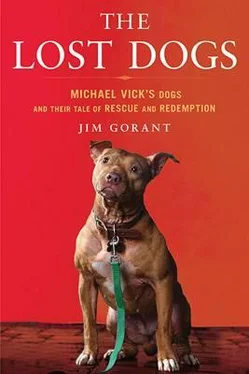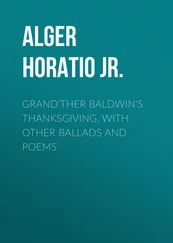He sniffed at the empty space where it seemed as if the floor should continue. He shifted his weight from side to side and looked around. He let out a soft, squeaky hhmmmm. Cohen didn’t understand the problem. He walked down a few steps and encouraged Jonny to follow. The dog moved forward like he wanted to do as asked, but he would not take the first step.
He shifted and barked. He reached his paw out once or twice but when it didn’t make contact with anything he pulled it back. The dog was clearly frustrated. Jonny’s history rushed through Cohen’s head. He realized the little guy had never lived in a house before and had probably never seen steps. Jonny had no idea what stairs were or how to conquer them.
Cohen tried to help. He reached out and grabbed Jonny’s front paw and tried to guide it down to the first step. That worked okay, but the dog had no idea what to do next. Which foot should he move now? He still had his weight shifted all the way back and showed no signs of throwing it forward. He was stuck.
Cohen decided that would be a lesson for another day, so he picked Jonny up and carried him out. Jonny was ecstatic to be outside. Cohen wanted to follow a path that they could stick to every day. He lived about two blocks from Golden Gate Park, so incorporating the park into the walk seemed like a good idea, but he also wanted to expose Jonny to new things, so some neighborhood exploring was necessary too.
That was a problem, though. When he was trying to help Jonny down the stairs Cohen noticed that the little pads on the bottom of his feet were soft as cooked ravioli. It made sense. Sure, Jonny had spent the last six months living on concrete floors, but he didn’t go anywhere. As he sat there in his tiny pen, his body atrophied and his feet lost the calluses and rough spots that usually build up naturally when any animal walks around.
They would have to keep the early excursions a little shorter until Jonny’s feet hardened. Cohen dreamed up a course that they could gradually expand so most of it would be familiar, but as Jonny’s stamina and walking welts built, they could tack on more distance without much of a shock.
Within minutes, Cohen realized he didn’t have much to worry about: Jonny would not make it far that day. He was so stimulated and so fearful at the same time that he jumped and chased and retreated and cowered and raced ahead in jumbled succession. Cohen held the leash like a man waterskiing behind a hummingbird, and Jonny, darting and dashing back and forth, tied his two-legged companion in knots. By the time they reached the corner, a distance of perhaps one hundred yards, they’d had to come to a complete stop twice so Cohen could untangle himself from the leash.
As they waited for the light to change, Jonny darted into a hedge planted in the adjacent yard. He dove over branches, scampered around trunks, rushed through leaves. Before Cohen could yell stop, the dog had so thoroughly knotted himself into the trees that it took a full ten minutes to disentangle him.
As Cohen stood there trying to calm the dog and work the leash through the branches, he was transported for a second. He was suddenly looking down on himself from above, and the scene he envisioned struck him as one of such utter frustration combined with pure slapstick that before he knew it he was laughing again.
For the rest of the walk Cohen laughed every time the dog knocked over a garbage can and then leapt away in horror. Every time Jonny twitched or skittered from everyday objects, every time the pooch looked up at him with his half-black and half-white face, like a big cookie, and raised his brows as if to ask, “Hey, you’re from around here; what’s up with this?”
In forty-five minutes they had not traveled far, but Cohen could already see this was going to be a real trip.
THE VIDEO WAS GRAINY and unprofessional, shot on a handheld camera that shook and skipped and soaked up all the ambient noises-a few voices, birds, distant barking. Still, she studied it, watched it over and over. It felt like 500,000 times, although the real number was probably more like 100. What she saw was both heart-melting and slightly alarming. The sight was also somewhat familiar.
On the day of the original raid at Michael Vick’s house, Marthina McClay had been sitting in the green velvet rocker that anchors her living room, watching a CNN report about the situation. Helicopters hovered over the stately white house on Moonlight Road and their cameras picked up the activities below. One of them zoomed in on a police officer leading a dog out of the woods and into a waiting crate.
He was a large male, maybe fifty-five or sixty pounds, with a tawny brown coat. Before the animal stepped inside he looked back over his shoulder and stared into the camera. McClay gasped. He was beautiful, with a black snout and black highlights around his eyes that made it look like he was wearing eyeliner. He wagged his tail and posed for the camera, which panned away. McClay turned to her roommate, who sat on the couch nearby, and said, “Shame is, they’re probably going to kill them all.”
Now, eight months later, McClay stared at the video on her computer screen. There had been a few big brown dogs with black snouts in the group, so she couldn’t be sure this was the same guy, but he sure looked like the dog from that CNN footage. His name was Bouncer and as she watched the video she knew why. Again and again he jumped straight up and down as if his legs were made of pogo sticks.
Amusing as it was to watch, the jumpiness was something of a warning sign for McClay. It was typical of high-energy dogs that had been locked up too long-jumping was the only outlet for their energy in confinement. How it would translate into a home setting was anyone’s guess. Would the big lug spend his days leaping all over her house? Would he transfer the impulse into some other energetic pursuit that would do even more damage?
But the video showed something else, too. In the scenes where Bouncer interacted with the men and women around him, he was calm and attentive. He was very people-focused. He was interested in what the handlers wanted, and he had a desire to please. These, McClay knew, were great traits. They indicated a solid temperament that she could work with.
She could also see that he was good with other dogs. That was important to McClay, since she had three pit bulls sleeping at her feet, and Bouncer would have to get along with them. When she first learned that the government was considering signing the dogs over to rescue groups, she submitted an application on behalf of her organization, Our Pack, but figured she’d never hear anything. A few weeks later she got a phone call. It was Rebecca Huss.
“What do you think about these dogs?” Huss asked.
“I believe at least a few of them could make the best household pets in America,” McClay responded.
“Oh, so you’ve worked with pit bulls before,” Huss said.
The conversation had gone on from there. Huss asked all the expected questions. The two women talked for a long time about the dogs. McClay also spoke numerous times to Tim Racer and Donna Reynolds, who were attempting to broker the arrangement. Eventually, Our Pack’s application was approved and the intensity of those negotiations picked up. Huss, Reynolds, and Racer hoped she could take more than one dog, but McClay didn’t have any foster homes available other than her own.
She could take only one dog, but she couldn’t decide which. She received videos of six or seven dogs. She asked endless questions. Somehow, though, she kept coming back to that big jumping bean. What she didn’t know was that Bouncer had been the luckiest of the Vick dogs. He had been the only one sent to the shelter in Hopewell, Virginia. It was a smaller, quieter facility at which each kennel had an indoor and outdoor section, which meant that he had more space, more stimuli, and fresh air. He was treated as an individual, not dealt with in a group. The staff bonded with him. He received lots of attention and was regularly allowed to run and play in a small exercise area. That didn’t erase the effects of eight and a half months of shelter life and the years in Vick’s operation, but it helped.
Читать дальше












